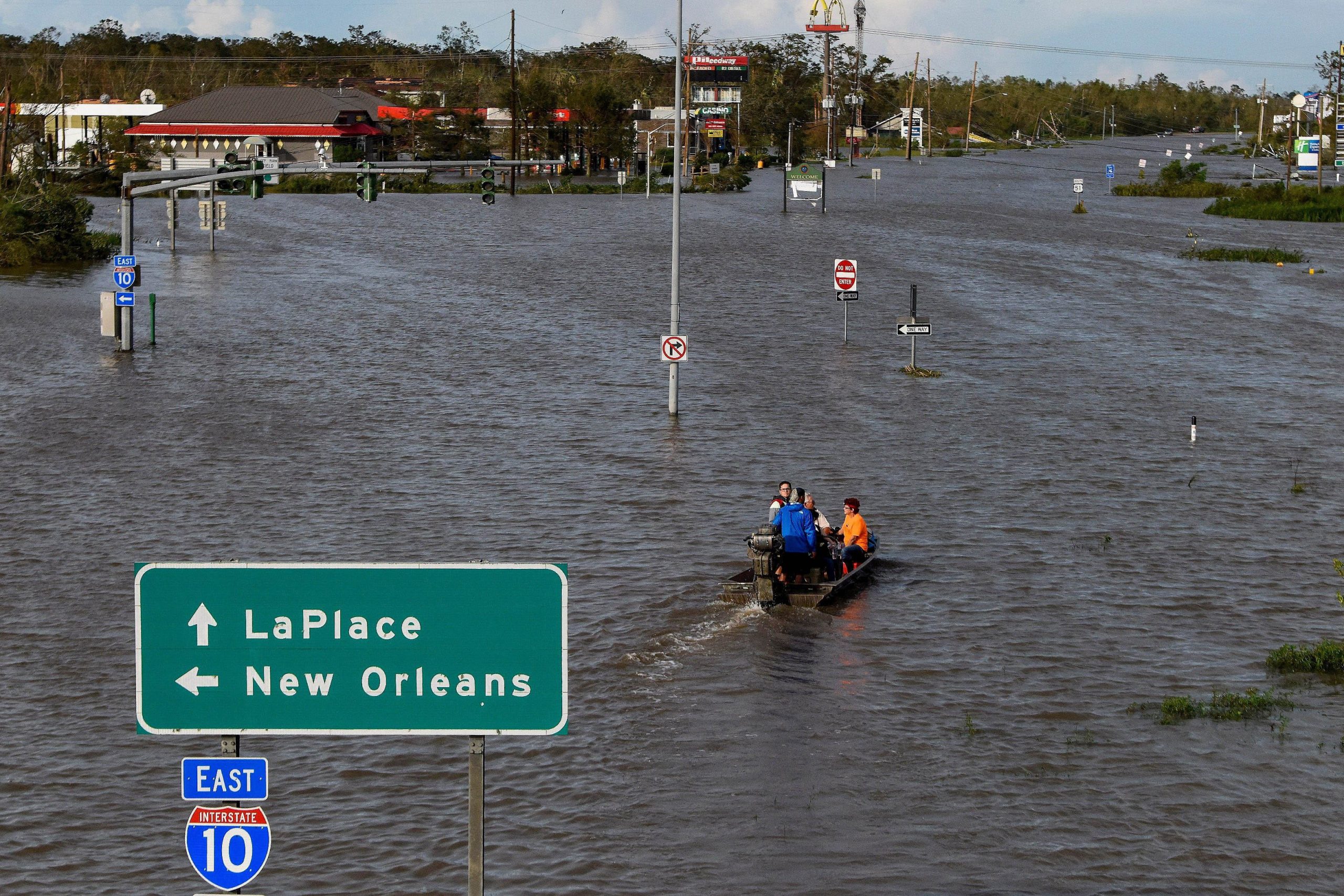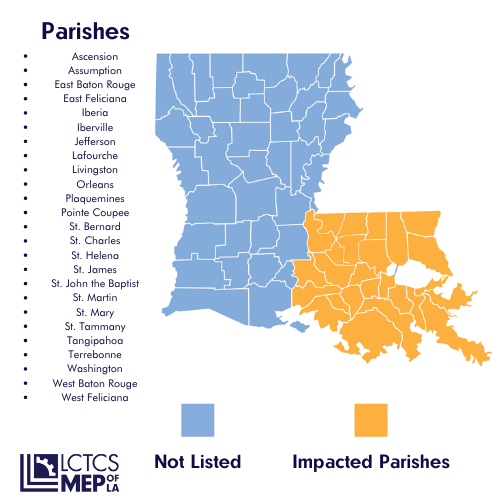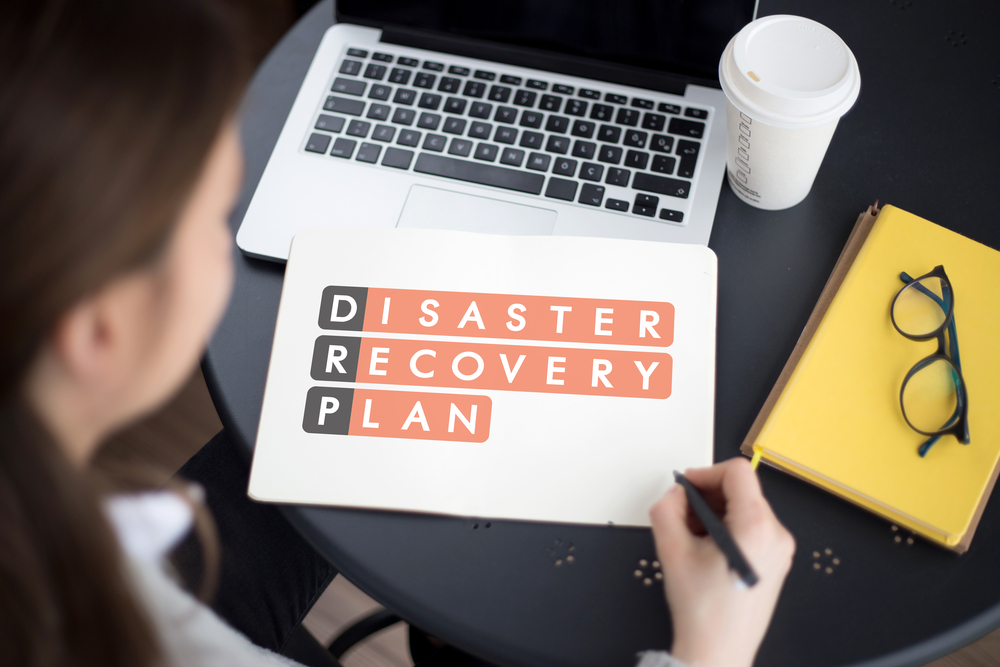Impacted by Hurricane Ida?

Highway 51 is flooded after Hurricane Ida struck LaPlace, Louisiana, U.S., August 30, 2021. Mickey Welsh/Montgomery Advertiser/USA TODAY Network via REUTERS
Louisiana Residents Affected by Hurricane Ida Can Apply for Possible FEMA Assistance
BATON ROUGE, La. – Louisiana homeowners and renters affected by Hurricane Ida who live in parishes that have recently been designated for Individual Assistance could be eligible for help from FEMA.
The parishes are: Ascension, Assumption, East Baton Rouge, East Feliciana, Iberia, Iberville, Jefferson, Lafourche, Livingston, Orleans, Plaquemines, Pointe Coupee, St. Bernard, St. Charles, St. Helena, St. James, St. John the Baptist, St. Martin, St. Mary, St. Tammany, Tangipahoa, Terrebonne, Washington, West Baton Rouge, and West Feliciana Parishes.
If you have homeowners or renters insurance, you should file a claim as soon as possible. By law, FEMA cannot duplicate benefits for losses covered by insurance. If you are uninsured or underinsured, you may be eligible for federal assistance.
The fastest and easiest way to apply is by visiting disasterassistance.gov/.
If it is not possible to apply online, call 800-621-3362 (TTY: 800-462-7585). The toll-free telephone lines operate from 6 a.m. to 10 p.m. CDT, seven days a week. Those who use a relay service such as a videophone, InnoCaption or CapTel should update FEMA with their specific number assigned to that service.
When you apply for assistance, have the following information readily available:
-
A current phone number where you can be contacted
-
Your address at the time of the disaster and the address where you are now staying
-
Your Social Security number, if available
-
A general list of damage and losses
-
If insured, the policy number or the agent and/or the company name
As soon as it is safe to do so, start cleaning up. Take photos to document damage and begin cleanup and repairs to prevent further damage. Remember to keep receipts from all purchases related to the cleanup and repair.
Disaster assistance may include financial help for temporary lodging and home repairs along with other programs to assist families recover from the effects of the event.
U.S. Small Business Administration (SBA) low-interest disaster loans are available for homeowners, renters, businesses of any size and most nonprofits. Similar to FEMA, SBA cannot duplicate benefits for losses covered by insurance.
For small businesses, those engaged in aquaculture and most nonprofits, up to $2 million is available for working capital needs even if there was no property damage, with a $2 million maximum loan for any combination of property damage and working capital needs.
For homeowners: up to $200,000 is available to repair or replace their primary residence. For homeowners and renters: up to $40,000 is available to replace personal property, including vehicles.
Businesses and residents can apply online athttps://disasterloanassistance.sba.gov For questions and assistance completing an application, call 800-659-2955 or email FOCWAssistance@sba.gov. SBA will answer specific questions about how a disaster loan may help each survivor recover from the disaster damage.
For the latest information visit fema.gov/disaster/4611. Follow the FEMA Region 6 Twitter account attwitter.com/FEMARegion6 or on Facebook at facebook.com/FEMARegion6/.
For State of Louisiana Hurricane Updates: https://hurricanerecovery.la.gov/
As a result of Hurricane Ida, Disaster Unemployment Assistance is now available by Louisiana Workforce Commission for people in 25 parishes. Determine if you qualify below.
Click here to apply: http://ow.ly/Je8E50G3jtE
Click here for FAQ’s: http://ow.ly/94xH50G3jtF
# # #
Actions to Take for a Faster Recovery
Username: guest
Password: survey
Business Continuity Assessment
Click the button above for a Free Risk Assessment covering 10+ Areas of Your Business
Preparing for a Disaster
⇒Assess Inventory: Take a written inventory of critical production equipment, IT equipment, and other assets that are vital to maintain operations. Inventory resources here.
⇒Prioritize: Prioritize your mission critical functions – the capabilities that need to be restored first. Prioritizing resources here.
⇒Plan: Develop a single comprehensive plan or a services of plans that cover response actions, recovery actions, and business continuity strategies. Planning resources here.
⇒Contracts & Agreements: The services (equipment repair, IT, etc) you will need in order to recover and secure with contracts/agreements. Contract and agreement resources here.
⇒Train & Exercise: Employees need to know what they are expected to do during a disaster. Conduct training events to communicate roles and responsibilities. Conduct exercises to validate the plan and identify gaps. Training and exercising resources here.
Actions to Take After a Disaster
⇒Assess: Assess your situation by determining the amount of damage, impact on critical functionality, impact on workforce, and impact on operations. Find assessment resources here.
⇒Communicate: Communicate to your employees, internal stakeholders, customers, and external supply chain the current situation and what you expect of them. Find communication resources here.
⇒Activate/Execute: Activate your emergency operations/recover plan(s) and use that to guide your efforts. Execute the contracts and agreements you put into place for these events. Find execution resources here.
⇒Pay Attention: Pay attention to the media and community events to learn what aid is available and the eligibility requirements. Find media resources here.
⇒Revise Plan: Your recover plan will need constant revision as the situation changes/improves. Update the plan throughout the recovery process to keep everyone progressing forward and informed. Find revision resources here.


